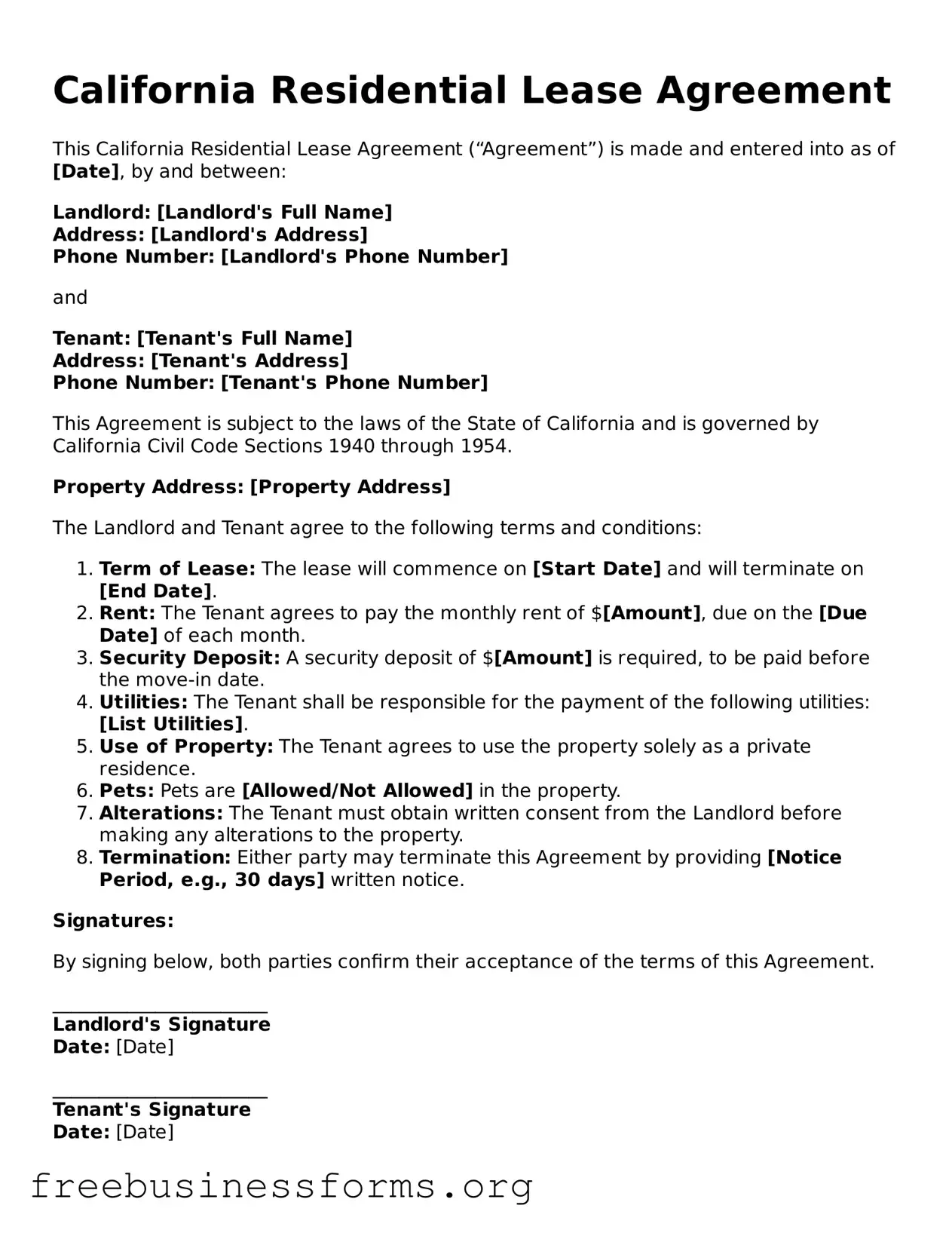California Residential Lease Agreement
This California Residential Lease Agreement (“Agreement”) is made and entered into as of [Date], by and between:
Landlord: [Landlord's Full Name]
Address: [Landlord's Address]
Phone Number: [Landlord's Phone Number]
and
Tenant: [Tenant's Full Name]
Address: [Tenant's Address]
Phone Number: [Tenant's Phone Number]
This Agreement is subject to the laws of the State of California and is governed by California Civil Code Sections 1940 through 1954.
Property Address: [Property Address]
The Landlord and Tenant agree to the following terms and conditions:
- Term of Lease: The lease will commence on [Start Date] and will terminate on [End Date].
- Rent: The Tenant agrees to pay the monthly rent of $[Amount], due on the [Due Date] of each month.
- Security Deposit: A security deposit of $[Amount] is required, to be paid before the move-in date.
- Utilities: The Tenant shall be responsible for the payment of the following utilities: [List Utilities].
- Use of Property: The Tenant agrees to use the property solely as a private residence.
- Pets: Pets are [Allowed/Not Allowed] in the property.
- Alterations: The Tenant must obtain written consent from the Landlord before making any alterations to the property.
- Termination: Either party may terminate this Agreement by providing [Notice Period, e.g., 30 days] written notice.
Signatures:
By signing below, both parties confirm their acceptance of the terms of this Agreement.
_______________________
Landlord's Signature
Date: [Date]
_______________________
Tenant's Signature
Date: [Date]
This document serves as a legally binding lease agreement between the parties named herein. It is advisable for both Landlord and Tenant to keep a copy for their records.
